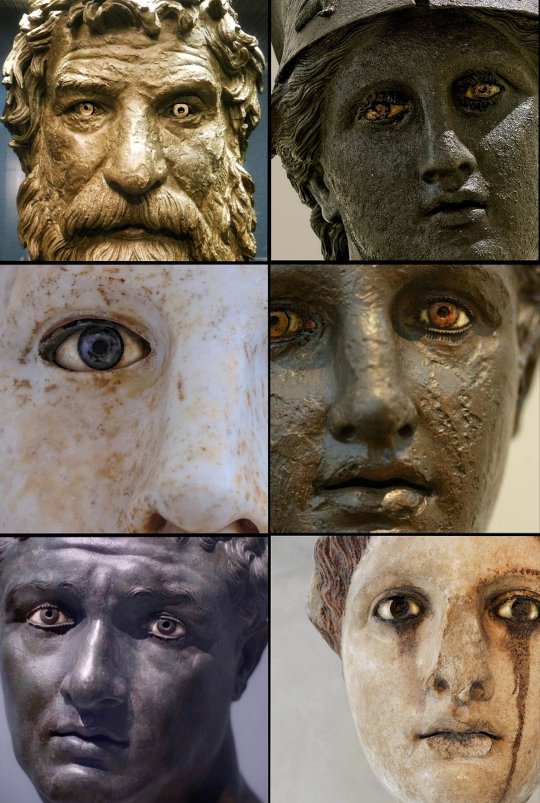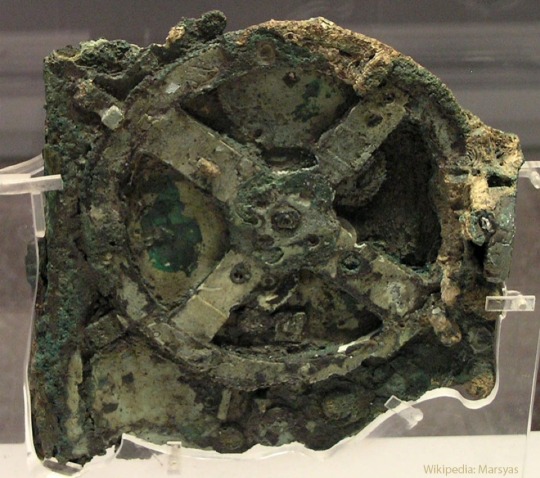#Antikythera
Explore tagged Tumblr posts
Text

Voller is introduced to the niffler! A fantastic beast, indeed. 😂✨
#mads mikkelsen#jurgen voller#voller#indiana jones and the dial of destiny#indiana jones#gellert grindelwald#grindelwald#fantastic beasts#harry potter#niffler#antikythera#chibi#zilla's art
133 notes
·
View notes
Text

The piercing gaze of the ancient Greeks.
A collection of some famous Greek sculptures looking directly at...you
From left to right:
1) Antikythera Philosopher, 250 BCE
2) Athena of Piraeus, 4th century BCE
3) Head of Hygeia, 5th-4th cen. BCE
4) Antikythera Ephebe, 4th cent. BCE
5) Unknown man from Delos, c. 100
BCE
6) Head of a Goddess, 2nd cent. CE
📸 ArysPan
#dark academia#light academia#academia aesthetic#classical#academia#escapism#classic literature#books#books and libraries#architecture#greek#statue#sculpture#eyes#antikythera#Athena of Piraeus#Head of Hygeia#royal core#cottage core#aesthetic
2K notes
·
View notes
Text


*I'm going to look like an idiot if it's not about time travel
#indiana jones#indiana jones 5#indiana jones and the dial of destiny#dial of destiny#indy#indy 5#1969#bingo#bingo card#indiana jones bingo#predictions#indiana jones predictions#Lucasfilm#disney#nostalgia#nostalgia poisoning#time travel#time machine#antikythera mechanism#antikythera
369 notes
·
View notes
Text


https://www.worldhistory.org/image/893/youth-from-antikythera/
209 notes
·
View notes
Text






The Antikythera Mechanism – Scientist of the Day
On May 17, 1902, an archaeologist named Valerios Stais was examining a small cook-book-sized rocky slab that had been brought up the previous summer from the floor of the Aegean Sea, off the coast of an island named Antikythera, between Crete and Greece.
read more...
#Antikythera#clockmaking#astronomical instruments#histsci#histSTM#20th century#21st century history of science#Ashworth#Scientist of the Day
55 notes
·
View notes
Text
A friend dragged us into Pulp Musicals hell and I might or might not have listened to it all like perhaps 5 times today 😳😁 anyway here's a lil Samuel and Mags from the scene of "On The Roof" !!

I am obsessed with these guys fuuhfhhfgg
#thanks for the mental illness avalee#pulp musicals#the great moon hoax#samuel stratford#margaret cavendish#matt dahan#james tolbert#natalie llerena#curt mega#mariah rose faith#kim whalen#the brick satellite#the ghosts of antikythera#antikythera#tgoa#lineless art#art#notsoplusultrart
100 notes
·
View notes
Text


i helped design a fanservant, here's antikythera mechanism! an ancient model of our solar system that sat at the bottom of the ocean for countless years. read all about her through gears' fantastic writing here!
#digital art#colored sketch#chibi#fgo#fanservant#others ocs#antikythera#you will love clock baby. oooooh you want to love her soooooooo bad
40 notes
·
View notes
Text


i'm not super experienced with color theory, but here are my portraits of rose and john during shifts reprise!
#pulp musicals#the ghosts of antikythera#antikythera#john herschel#rose stratford#curt mega#mariah rose faith casillas
17 notes
·
View notes
Text
The Antikythera Mechanism

It does what? No one knew that 2,000 years ago, the technology existed to build such a device. The Antikythera mechanism, pictured, is now widely regarded as the first computer. Found at the bottom of the sea aboard a decaying Greek ship, its complexity prompted decades of study, and even today, some of its functions likely remain unknown. X-ray images of the device, however, have confirmed that a main function of its numerous clock-like wheels and gears is to create a portable, hand-cranked, Earth-centered, orrery of the sky, predicting future star and planet locations as well as lunar and solar eclipses. The corroded core of the Antikythera mechanism's largest gear is featured, spanning about 13 centimeters, while the entire mechanism was 33 centimeters high, making it similar in size to a large book. Recently, modern computer modeling of missing components is allowing for the creation of a more complete replica of this surprising ancient machine.
Image Copyright: Image Credit & License: Marsyas, Wikipedia
6 notes
·
View notes
Text
Indiana Jones and the REAL Dial of Destiny??

OK BUT WHAT IF I TOLD YOU THE DIAL OF DESTINY EXISTS IRL... KIND OF...
The Antikythera Mechanism is (possibly) the worlds first ever analogue computer, mechanical calendar, planetary navigation device - it does it all! Find out all about it in my new YouTube video, and don't forget to subscribe!! x
youtube
#ancient history#scottish youtuber#archaeology#archaeogaming#chaotic academia#youtube#archaeolorhi#dark academia#indiana jones#indiana jones and the dial of destiny#dial of destiny#antikythera#antikythera mechanism#classical archaeology#greek archaeology#roman archaeology#history#museumcore#harrison ford#phoebe waller bridge#archimedes#hipparchus#Youtube
3 notes
·
View notes
Text
Antikythera Mechanism

Researchers claim breakthrough in study of 2000 year-old Antikythera mechanism, an astronomical calculator found in sea.
From the moment it was discovered more than a century ago, scholars have puzzled over the Antikythera mechanism, a remarkable and baffling astronomical calculator that survives from the ancient world.
The hand-powered, 2000 year-old device displayed the motion of the universe, predicting the movement of the five known planets, the phases of the moon, and the solar and lunar eclipses.
But quite how it achieved such impressive feats has proved fiendishly hard to untangle.
Now researchers at UCL believe they have solved the mystery – at least in part – and have set about reconstructing the device, gearwheels and all, to test whether their proposal works.
If they can build a replica with modern machinery, they aim to do the same with techniques from antiquity.
“We believe that our reconstruction fits all the evidence that scientists have gleaned from the extant remains to date,” said Adam Wojcik, a materials scientist at UCL.
While other scholars have made reconstructions in the past, the fact that two-thirds of the mechanism are missing has made it hard to know for sure how it worked.
The mechanism, often described as the world’s first analogue computer, was found by sponge divers in 1901 amid a haul of treasures salvaged from a merchant ship that met with disaster off the Greek island of Antikythera.
The ship is believed to have foundered in a storm in 1st Century BC, as it passed between Crete and Peloponnese en route to Rome from Asia Minor.
The battered fragments of corroded brass were barely noticed at first, but decades of scholarly work have revealed the object to be a masterpiece of mechanical engineering.
Originally encased in a wooden box one foot tall, the mechanism was covered in inscriptions – a built-in user’s manual – and contained more than 30 bronze gearwheels connected to dials and pointers.
Turn the handle and the heavens, as known to the Greeks, swung into motion.
Michael Wright, a former curator of mechanical engineering at the Science Museum in London, pieced together much of how the mechanism operated and built a working replica, but researchers have never had a complete understanding of how the device functioned.
Their efforts have not been helped by the remnants surviving in 82 separate fragments, making the task of rebuilding it equivalent to solving a battered 3D puzzle that has most of its pieces missing.
Writing in the journal Scientific Reports, the UCL team describe how they drew on the work of Wright and others.
They used inscriptions on the mechanism and a mathematical method described by the ancient Greek philosopher Parmenides to work out new gear arrangements that would move the planets and other bodies in the correct way.
The solution allows nearly all of the mechanism’s gearwheels to fit within a space only 25mm deep.
According to the team, the mechanism may have displayed the movement of the sun, moon and the planets Mercury, Venus, Mars, Jupiter, and Saturn on concentric rings.
Because the device assumed that the sun and planets revolved around Earth, their paths were far more difficult to reproduce with gearwheels than if the sun was placed at the centre.
Another change the scientists propose is a double-ended pointer they call a “Dragon Hand” that indicates when eclipses are due to happen.
The researchers believe the work brings them closer to a true understanding of how the Antikythera device displayed the heavens, but it is not clear whether the design is correct or could have been built with ancient manufacturing techniques.
The concentric rings that make up the display would need to rotate on a set of nested, hollow axles, but without a lathe to shape the metal, it is unclear how the ancient Greeks would have manufactured such components.
#Antikythera mechanism#astronomical calculator#ancient world#ancient civilizations#Antikythera#world’s first analogue computer#corroded brass#mechanical engineering#inscriptions#gearwheels#Parmenides#ancient greece#ancient history
1 note
·
View note
Text
Discovery of the Antikythera shipwreck
In an impressive melding of advanced technology, historical exploration, and the tradition of precision watchmaking, Hublot, a pioneering Swiss watch manufacturer, has embarked on an exceptional project that intertwines the past with the present through its involvement with the Antikythera archaeological site. Delve into the fascinating collaboration between Hublot and the world of archaeology,…
0 notes
Text
0 notes
Text
So did the Antikythera open the time butthole, or did it just help them find it after it opened naturally? What did continental drift have to do with anything?
Archimedes rigged it so it could only bring the user back and forth between 213 BC and August 1969. He even says that Indiana Jones and the Nazis were always supposed to come through the butthole to help save Syracuse from the Romans, but Rome wins this one. They burn Syracuse to the ground, they take the whole island, they slaughter Archimedes in 212 BC, the dial gambit didn't even buy him any time. The entire time travel shenanigan was for nothing.
17 notes
·
View notes
Link
On this episode, we discuss the Antikythera Mechanism, a device found in a Roman shipwreck off the Greek Island of Antijythera. Retrieved with several other treasures, due to it's advanced state of petrification and other issues, it wasn't even looked at much after it was initially brought up. But over time, people have discovered this uncanny device that simulates the movement of the heavens created in the time of Before Common Era using a differential gear which otherwise doesn't show up for another 1300 years. We discuss the devices discovery and the theories about it in this man learning stuff is fun episode of the Family Plot Podcast!
#antikythera#archimedes#astronomical#brass#caesar#calculator#clock#computor#corinth#crete#derek#desolla#device#julius#machine#mechanism#navigation#price#time#wood
0 notes
Text
Lego Antikythera Mechanism
youtube
A video explaining this fully functional replica of the Antikythera mechanism, the first analog computer, from ancient Greece, recreated in LEGO!
0 notes